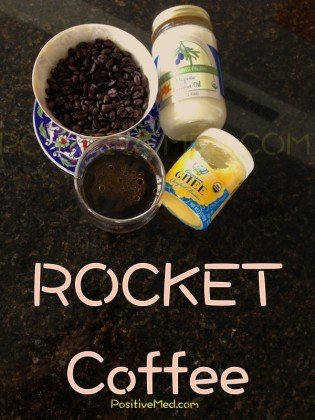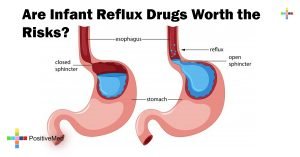
What a Man’s Testicles Tell About His Health
It’s commonly known that we studs often think about s*x. We like talking about what turns us on. Still, concerns about our boys are kept in the closet. There are several important facts that shouldn’t be kept under wraps. Here we disclose what every man should know about his nuts.

SPORTS ILLUSTRATED
Your balls consist of three structures:
testicles
– oval-shaped organs that manufacture testosterone. This chemical messenger regulates:
- s*x drive
- sperm production
- red blood cell formation
- muscle size and strength
- bone mass
- fat distribution
epididymis
– a tube on the back of each testicle that stores and transports sperm.
scrotum
– a loose sac of skin that holds and protects your testicles.
Here’s a diagram of your manly equipment.
SIZE AND LOCATION
Testicles average two inches in length and one inch across. It’s normal for your nuts to be mismatched in size. If one sits lower and behind the other, that’s fine. It’s actually a divine design. It keeps your balls from bashing together. In most guys, the right ball is slightly larger, and the left is positioned lower. Testicles should feel smooth and firm but not hard.
RELATED ARTICLE: 10 Facts You Didn’t Know About Sperm
The location of your balls outside your body is also ingenious. It creates the ideal climate for sperm incubation, two degrees below internal body temp.
CRYSTAL BALLS
Testicles can serve as crystal balls. Research shows they can indicate:
- heart health
- sleep quality
- fatherly inclination
HEART HEALTH
Large ballsmay foretell heart disease. A 2013 Italian study reported in the Journal of $e*u@l Medicine evaluated 2,800 men. Testicle size and hormones were measured over a seven-year period. Men with large testicles had a greater incidence of high blood pressure and cardiac complications.
The link between heart disease and testicle size appears to be luteinizing hormone (LH).This chemical is released by the pituitary gland and triggers testosterone production. A high LH level raises the risk of a blood clot, stroke, or heart attack. If your testicles are growing larger, it’s time to see your doctor.
SLEEP QUALITY
A 2012 Danish study found a connection between small avocados and poor slumber. Scientists surveyed nearly 1,000 men regarding their sleep habits, followed by measuring sperm count and testicle size. Men who were sleep-deprived had 29 percent lower sperm counts than men who slept soundly. They also had smaller balls.
FATHERLY INCLINATION
According to Emory University research, guys with small balls are more likely to be doting dadsthan men with sizable genitals. The study evaluated 70 American men who were fathers of a toddler. Those with small family jewels were more involved with feeding, diapering, and bathing. MRI scans also showed increased brain activity in areas associated with parental motivation. The study was published in the Proceedings of the National Academy of Science.
HANDLE WITH CARE
Trauma to your walnuts can have serious consequences. Testicles lack the protective muscles and bones that most organs have. A prolonged squeeze can trigger a sudden drop in blood pressure and cause fainting. A hard hit can make you sterile.
FERTILITY
If you’re looking to become a father, here’s how to keep your family jewels in baby-making shape. Increase your antioxidant intake. Avoid smoking and alcohol. Smoking kills your swimmers, lowering sperm count. Alcohol can reduce testosterone, impair sperm production, and cause erectile dysfunction.
Healthy foods that increase sperm production are:
- bananas, strawberries, oranges, cherries
- dark chocolate
- walnuts
- spinach
- eggs
Also, avoid wearing tight underwear, pants, or bathing suits. If you play contact sports, be sure to wear a protective cup. If you bicycle, choose a saddle that accommodates your coconuts.
RELATED ARTICLE: 6 Warning Signs that Indicate Low Testosterone
SHRINKAGE AND EXPANSION
For your jewels to produce sperm, the environment must be just right. Temperature regulation is your scrotum’s responsibility. It changes size to maintain swimmer viability. When you’re cold, your scrotum shrinks to conserve warmth. When you’re hot, it relaxes to release the extra heat.
SWELLING
Swollen testicles can be caused by:
- Hydrocele– a fluid collection around a testicle. The cyst may be uncomfortable but typically isn’t painful or dangerous. A hydrocele can result from scrotal injury or inflammation. Treatment usually isn’t necessary. A doctor may recommend hydrocele repair if a cyst becomes too large, infected, painful, or interferes with blood flow.
- Infection– resulting from a virus or STD.
- Inguinal Hernia– a condition where part of the intestine pushes into the scrotum or groin through a weak area of the abdominal wall.
- Varicocele– venous swelling.
- Testicular Trauma– such as being hit, kicked, squeezed, or crushed.
- Torsion– twisting of a testicle. This is an emergency, requiring immediate medical attention.
- Cancer– see next section.
Any sign of swelling should be examined by your doctor. 8 /
CANCER
The odds of a man getting testicular cancer are roughly 1 in 270. It’s the most common form of carcinoma in young and middle-aged men. When diagnosed early, testicular cancer has a 96 percent success rate. Even if cancer has spread, up to 80 percent of cases can be cured.
RELATED ARTICLE: 10 Foods that Increase Your Sperm Count
Causes
In many cases, the cause of testicular cancer may not be clear. However, there are risk factors that can predispose you to develop carcinoma. These are:
- Undescended Testicles– balls form in the abdomen during fetal development. Usually, they descend into the scrotum before birth. If testicles don’t comply with the plan, this increases cancer risk. Even if testicles are surgically relocated to the scrotum, the risk remains.
- Abnormal Development– Klinefelter syndrome is a common genetic male abnormality. It delays testicular growth, resulting in smaller than normal testicles. It can also cause enlarged breast tissue, weak muscles, and sparse body and facial hair.
- Family History– testicular cancer in family members increases the odds.
- Age– Men between the ages of 15-35 are at increased risk.
- Race– Testicular tumors are more common in Caucasian versus African-American men.
NOTE– Many men who develop testicular cancer have no risk factors.
Red Flags
Self-examination should be performed at least once monthly after bathing. Cancer usually affects one testicle. According to the Mayo Clinic, here are the signs to watch for:
- testicular swelling or enlargement
- hardening
- lumps
- significant reduction in size
- scrotal heaviness
- a dull ache in the groin, abdomen, or back
- a sudden collection of fluid in the scrotum
- testicular or scrotal pain
- breast tissue enlargement or tenderness
Testicular Examination
Self-examination can save your life. Here’s how to check for suspicious signs:
1. Do your assessment right after a warm bath or shower, when the scrotum is relaxed.
2. Stand before a mirror. Survey for scrotal swelling.
3. Support your testicles with your palm. Note their size and weight. This will help you discern any future changes.
4. Examine each testicle separately. Place your second and third fingers under one testicle with your thumb on top. Gently roll the testicle between your thumb and fingers to feel for any irregularities. Repeat on the other testicle.
5. Find the epididymis, the soft, rope-like structure on the back of each testicle. By identifying the epididymis, you won’t mistake it for a lump.
See your doctor if you note any questionable signs, especially those lasting longer than two weeks.
COCONUT EXPERT
Now you’re a coconut crackerjack. You know all about:
- size and location
- heart health
- sleep quality
- fatherly inclination
- protecting your jewels
- fertility
- shrinkage and expansion
- swelling
- cancer
So, fellow hunks and stud muffins, may you each live long and prosper!








